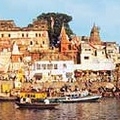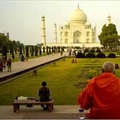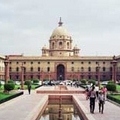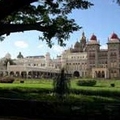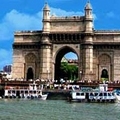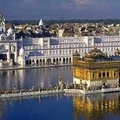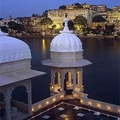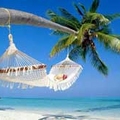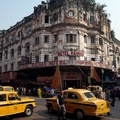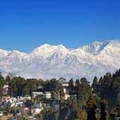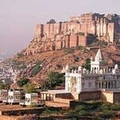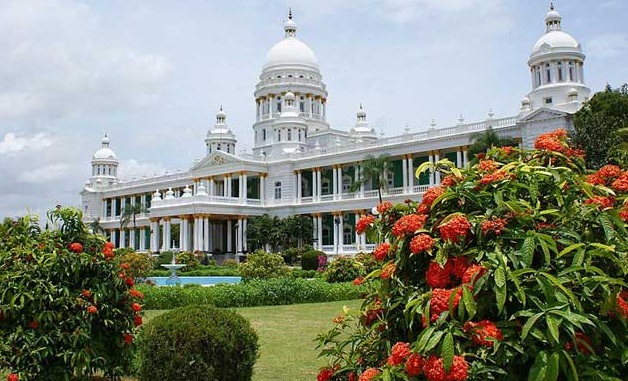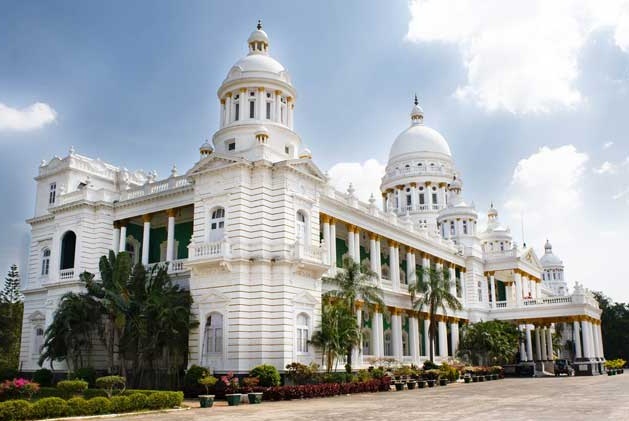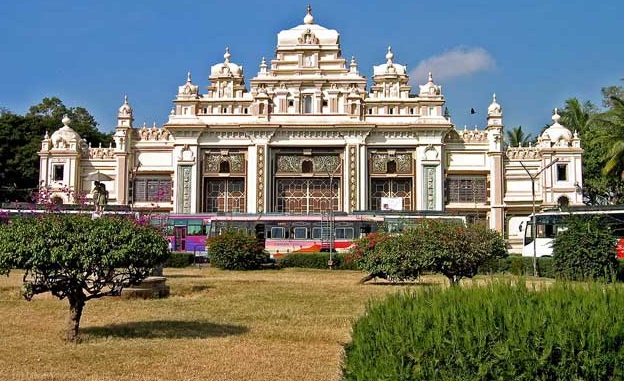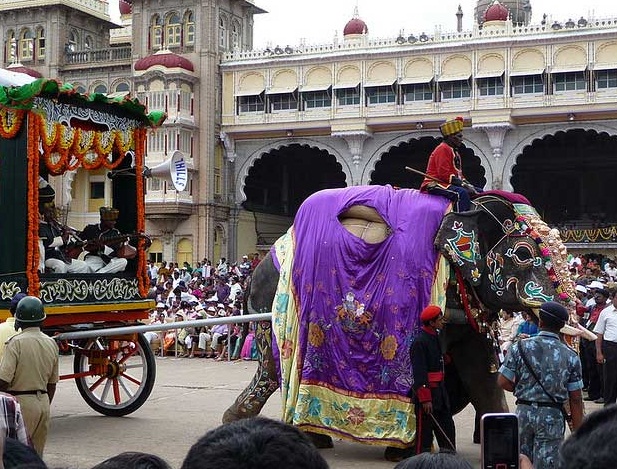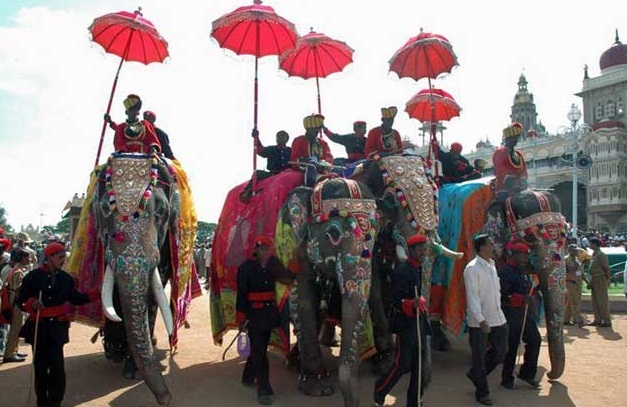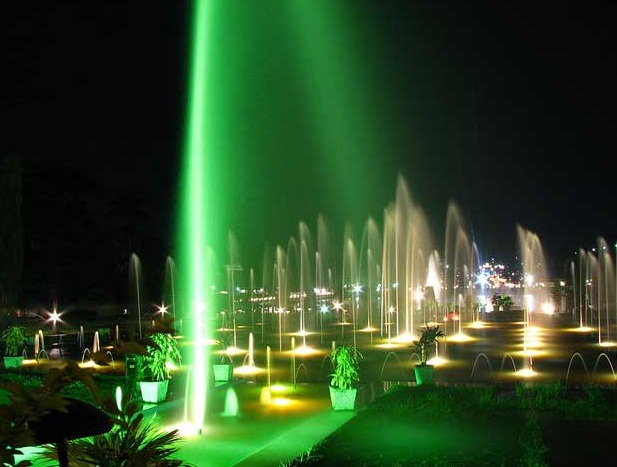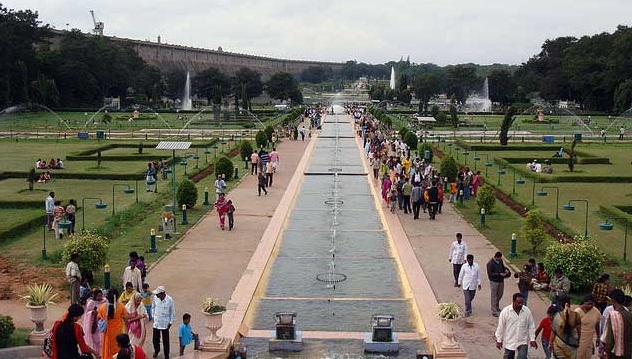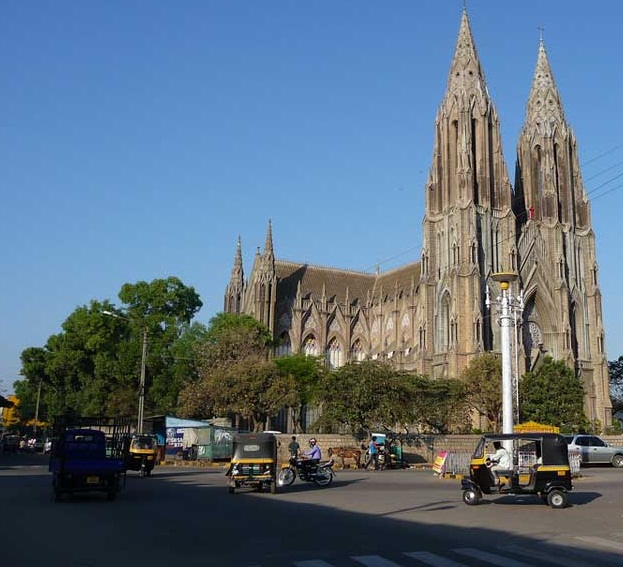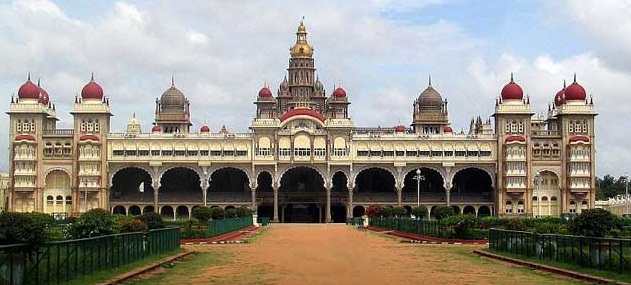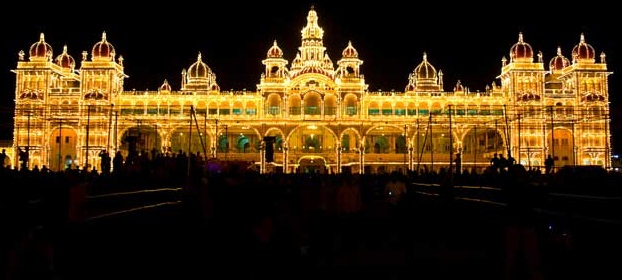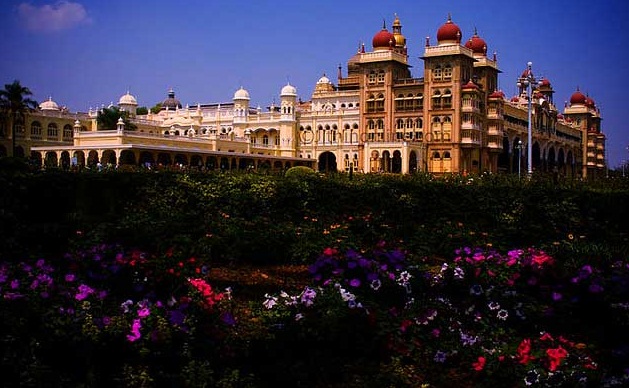Destinations / The Best Cities to Visit in India / Mysore - A City of Palaces
Mysore - A City of Palaces
Mysore is one of the main reasons why tourists opt for a visit to South India. The city combines a wealth of history and beauty of nature in their palaces, temples, parks and other attractions, annually attracting 2.7 million tourists. While in Mysore, you can visit the castles and get acquainted with the lifestyle of the royal dynasty, enjoy the grandeur of architecture, relax in a beautiful pair of Brindavan, and, if desired, make a trip to the national parks of Bandipur and Nagarhole and see Bengal tigers, leopards and Indians from the interior of your Jeep . The city of palaces, gardens, shady avenues and sacred temples play an important role in the history of South India and still continue to retain the charm of its ancient heritage.
Mysore: General Information
The Principality of Mysore in southern India was founded in 1399. The ruling dynasty is Vodeyar, originally was a vassal of the Vidzhayanagarsk Empire. With its decline (about 1565), Vodeyary one of the first declared their independence. In the 17th century, the principality became a powerful state in South India. At the time of the rulers Hyder Ali and his son Tipu Sultan, had reached the peak of power and prosperity. Tipu Sultan, known by the nickname "The Tiger of Mysore", became a legend during his lifetime and is still considered one of the most enlightened rulers in India. "In this world I would rather live two days like a tiger than a hundred years as a sheep" - Tipu Sultan said, fiercely resisted the British colonization in southern India. Huge efforts and resources of four grueling Anglo-Mysore War, and as much as 40 years for the British before Mysore, the last of the Indian states was included in the British East India Company (Tipu Sultan was killed in the last battle of the Fourth Anglo-Mysore War). Twenty-five of the dynasty of Maharaja Vodeyar ruled the city during the 570-year history, until India's independence in 1947 and the government's declaration of the final abolition of the ceremonial functions in 1970. The rulers of the ruling dynasty were patrons of art and culture and made a significant contribution to the cultural development of the city, making Mysore the Cultural Capital of Karnataka.
Mysore is well known for the celebration of Dasara festival, painting, sweets, traditional silk turbans, manufacturing incense, schools for the study of yoga. Every year thousands of foreigners visit Mysore to study yoga. It is one of the most popular centers to study yoga in India. Mysore is among the first cities in India that have implemented the ideas of modern urban planning, as evidenced by broad tree-lined boulevards, markets and furnished beautiful parks. The city is famous for its ancient palaces and administrative buildings. In total there are 17 palaces. One of them turned into a museum, the other in an art gallery and three more in the hotel. As a rule, all Indian cities are noisy, dusty and crowded. Mysore is a pleasant exception to this rule. It is a city in which you want to stay as much longer as parting with it is always painful. In a survey conducted in 2001 edition of Business Today, Mysore took second place in the category of the cleanest city in India, the second only to Chandigarh. Tourism is an important sector of the economy of the city. The development of information technology in the late 20 - early 21 th century led to what became the second largest software exporter in Karnataka, after Bangalore .
Mysore: Sights
The Mysore Palace
Mysore Palace is one of the most recognizable and most visited in India. It attracts almost as many tourists as the Taj Mahal . Designed by British architect Henry Irwin, it can be called the most beautiful modern palace in India. The palace was built in the old fortress and served as the official residence of the former princely dynasty Vodeyarov. Vodeyary first built it in the 14th century, then demolished and rebuilt the palace several times. During his reign, Tipu Sultan ordered to destroy an entire city within the fortress, including a palace, and use the building material for the construction of a new city Nazarabad (now in the range of Mysore). That palace, which we see today was built in 1897 and completed in 1912, then expanded in 1940 (a fire destroyed the previous wooden palace in 1897). Mysore Palace is one of the most famous tourist attractions in India after the Taj Mahall. Every year it takes more than 2.7 million tourists. It is one of the most visited monuments in India, ahead of even the Red Fort and the Qutb Minar in Delhi . Tourists are allowed to visit the palace, but are not allowed to take pictures inside. All visitors at the entrance remove their shoes. On the territory of the palace complex is located twelve Hindu temples. The oldest of them was built in the 14th century, the most modern in 1953. The palace has an armory, which stores a set of different types of weapons belonging to members of the royal family. These include weapons, dating back to the 14th century (spears, hatchets, etc.), as well as the weapons that were used in the early twentieth century (guns, etc). On Saturdays, Sundays and holidays the palace is illuminated by 100,000 lights.
Dasara Festival
Every autumn, the main palace of the city is the venue for the famous Dasara festival. The festival celebrates the victory of the Great Goddess Durga over the evil demon Mahishasura, and thus, according to Hindu mythology, symbolizes the victory of good over evil. Throughout the 10 days of Dasara, the entire city hosts music and dance concerts. Musicians and dancers from all over India are invited to Mysore to perform. Another attraction is the Dasara Kusti Spardhe (freestyle wrestling), which attracts fighters from all over India. The tradition of Dasara was supposed by rulers of the dynasty in 1610 Vodeyarov in Shrirangapatnam and in Mysore with great pomp began to celebrate in 1799. The celebration of Dasara has become an integral part of the cultural life of Mysore. In honor of this holiday Mysore Palace is illuminated by nearly 100,000 light bulbs for all 10 days of the festival. On the tenth day of the Festival (Vijaya Dashami), on the streets of the city is the traditional colorful Dasara procession. Bright costumes, dance groups, music bands, decorated elephants, horses and camels are part of the procession, which start from the Mysore Palace and goes to a place called Bannimantap, where the worship service. Flare parades mark the end of the holiday. The celebration of Dasara falls in September or October each year.
The Brindavan Park
Mysore has about 180 parks and recreation areas. Many residents have a rest near the numerous lakes located in the city. The most famous vacation spot is founded in 1932 in Brindavan Park. Visited by about 2 million tourists annually, the park is one of the major attractions of Mysore, though at a distance of 15 km from the city. The main attraction of the park is the musical fountain where the water bursts synchronized with the music of the song. The show at the musical fountain starts at 19:00. The park has a lake, if they wish, visitors can swim. The park entrance is free.
The Dzhaganmohan Palace
Mysore Palace, which was originally inhabited by the ruling dynasty was destroyed by fire in 1897. The construction of a new palace was completed only in 1912 and all this time the palace was used by the Dzhaganmohan members of the royal family as a domestic residence. In 1915 the palace was turned into an art gallery. The Art Gallery contains one of the largest collections of culture in South India. Most of them are paintings, a large part has paintings of Indian artist Raja Ravi Varma. The number of pictures in the gallery is over 2000. Other exhibits include weapons, musical instruments, sculptures, brassware, antique coins. The concert hall of the Palace Dzhaganmohan organized traditional dance performances, music festivals and other cultural programs during the 10-day Dasara celebrations.
St. Philomena Church
The beautiful Roman Catholic cathedral is one of the largest churches in India. Built in the Gothic architecture the church resembles the famous Cologne Cathedral, included in UNESCO World Heritage List. The height of the spiers of the church is of 53 m.
Lalitha Mahal
Lalitha Mahal is the second largest palace in Mysore. The palace was built in 1921 by order of Krishnaraja IV as a residence for the then Governor General of India. The architecture of the palace is alike the Cathedral of St Paul's in London and is one of the most beautiful buildings in the city of Mysore. Built in the style of an Italian palazzo with two Ionic columns and a dome, painted in pure white, the palace has a very elegant look. In 1974 was converted into a luxury hotel. Near the palace is a beautiful garden.
The Zoo
The Zoo is one of the most popular tourist attractions of Mysore. It was established in 1892, making it one of the oldest zoos in the world. The zoo animals live more than 40 countries: the Royal Bengal tiger, white tigers, elephants, giraffes, deer, black bear, gaur (Indian bison), white peafowl, African rhinoceros, giraffes, hippos, and gorillas. At the zoo is a lake that attracts migratory birds during the breeding season. Other attractions include a botanical garden with many exotic species of ornamental plants and trees. The Zoo is closed on Tuesday.
Chamundi Hills
On the mountainChamundi Hills is a beautiful temple of Goddess Chamundi (aged 300 years) and a huge statue of Nandi (the bull). The top of the mountain (altitude 1000 meters) offers panoramic views of the city, from here you can see the palaces of Mysore and Lalita Mahal. The panorama of the city at dusk is particularly attractive, at weekends and on holidays, illuminated Mysore Palace glitters like gold.
Others The Best Cities to Visit in India .
Maps of Mysore - A City of Palaces
map IndiaOthers from The Best Cities to Visit in India
You can stay at different hotels and chalets in India, which are available in abundance.
You can even opt for holiday rentals apartments which can be found in all towns.
There are various holiday villas in many cities to promote tourism.
Here, we present the top cities with landmark tourist spots as well.
Geographical position India is a country in South Asia.
India is the 7th place in the hierarchy of countries by area, second only to the number of inhabitants and democracy to most people.
Neighborhood India has a coastline with a length of seven thousand kilometers and the western border with Pakistan, Nepal, China, Bhutan and Bangladesh in the northeast and Mynmar in the east.
In the Indian Ocean, it is adjacent to Sri Lanka, Maldives and Indonesia.
The Relief India has three natural regions: the region of high mountains, Indo-Ganges Plain and the Deccan Plateau.
The region of high mountains in the north and northeast of the country comprises most of the Karakorum Mountains and part of the Himalaya Mountains.
High mountains covered with snow are persistent, there are many glaciers which are strongly fragmented by rivers.
Indo-Ganges is an alluvial plain, low and smooth.
The landscape is formed from the large Indian peninsular Deccan Plateau with sharp edges which are based on coastal plains.
The most important river of India is the Ganges.
Climate The climate of India is tropical monsoon with different shades, depending on the altitude and the available relief.
In the Northeast and in some areas protected from the wind very little precipitation falls on the Deccan Plateau, western slopes of Western Ghat region at the foot of Himalaya receive a large amount of precipitation.
Tourism Home of the Hindu civilization of the valley, the center of trade routes and vast empires, India has played a major role in the human history.
Brahmanism, Hinduism, Sikhism, Buddhism and janismul originated in India, while Islam and Christianity enjoy a rich tradition here.
Colonized as part of the British Empire in the nineteenth century, India gained independence in 1947 as a unified nation after sustained effort made in this direction.
Population, creatures,the geographical and climate system are among the most diverse in the world.
You may also remember that India is the home of pepper.

